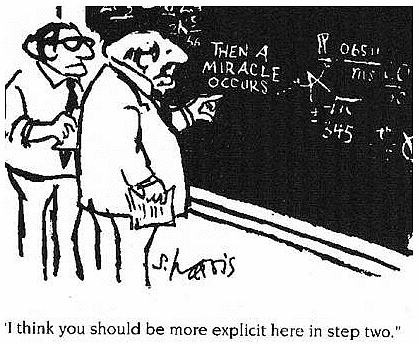10TH Grade Mathematics [Geometry] |
|
|--Introduction to Logic
|--Conditional and Biconditional Statements
|--Reasoning with Properties from Algebra
|--Indirect Proof
|--Proof and Perpendicular Lines
|--Conditional and Biconditional Statements
|--Reasoning with Properties from Algebra
|--Indirect Proof
|--The Converse of the Pythagorean Theorem
|--Trigonometric Ratios
|--Circles and Inscribed Angles
|--Circunference and Arc Length
Required Textbook: A Beka Geometry, Work-Text, Pensacola, Florida, current edition.
[a] Get skills on geometric thinking and spatial reasoning. Spatial reasoning plays a critical role in geometry; shapes and figures provide powerful ways to represent mathematical situations and to express generalizations about space and spatial relationships.
[i] Geometry consists of the study of geometric figures of zero, one, two, and three dimensions and the relationships among them. Students study properties and relationships having to do with size, shape, location, direction, and orientation of these figures.
[ii] Understand the structure of, and relationships within, an axiomatic system.
[iii] Develop an awareness of the structure of a mathematical system, connecting definitions, postulates, logical reasoning, and theorems.
[iv] Compare and contrast the structures and implications of Euclidean and non-Euclidean geometries.
[v] Analyze geometric relationships in order to make and verify conjectures about angles, lines, polygons, circles, and three-dimensional figures, choosing from a variety of approaches such as coordinate, transformational, or axiomatic.
[b] Geometric patterns.
[i] Identify, analyze, and describe patterns that emerge from two- and three-dimensional geometric figures.
[ii] Use numeric and geometric patterns to make generalizations about geometric properties, including properties of polygons, ratios in similar figures and solids, and angle relationships in polygons and circles.
[iii] Identifies and applies patterns from right triangles to solve problems (Pythagorean theorem).
[c] Dimensionality.
[i] Analyze the relationship between three-dimensional objects and related two-dimensional representations and use these representations to solve problems.
[ii] Understand that coordinate systems provide convenient and efficient ways of representing geometric figures and use them accordingly.
[iii] Use slopes and equations of lines to investigate geometric relationships, including parallel lines, perpendicular lines, and special segments of triangles and other polygons.
[iv] Develop and use formulas including distance and midpoint.
[d] Congruence and the geometry of size.
[i] Extend measurement concepts to find area, perimeter, and volume in problem situations.
[ii] Find areas of regular polygons, composite figures, sectors and arc lengths of circles using proportional reasoning.
[iii] Find surface areas and volumes of prisms, pyramids, spheres, cones, and cylinders.
[e] Similarity and the geometry of shape.
[i] Use similarity properties and transformations to explore and justify triangle similarity relationships, such as right triangle ratios, trigonometric ratios, and Pythagorean triples.
[ii] Describe the effect on perimeter, area, and volume when length, width, or height of a three-dimensional solid is changed.
|
1.1 - Introduction to Logic

...
|
2.1 - Proof and Perpendicular Lines
...
|
3.1 - The Converse of the Pythagorean Theorem
...
|
4.1 - Circles and Inscribed Angles
...
[1] A Beka Geometry, Work-Text, Pensacola, Florida.
...